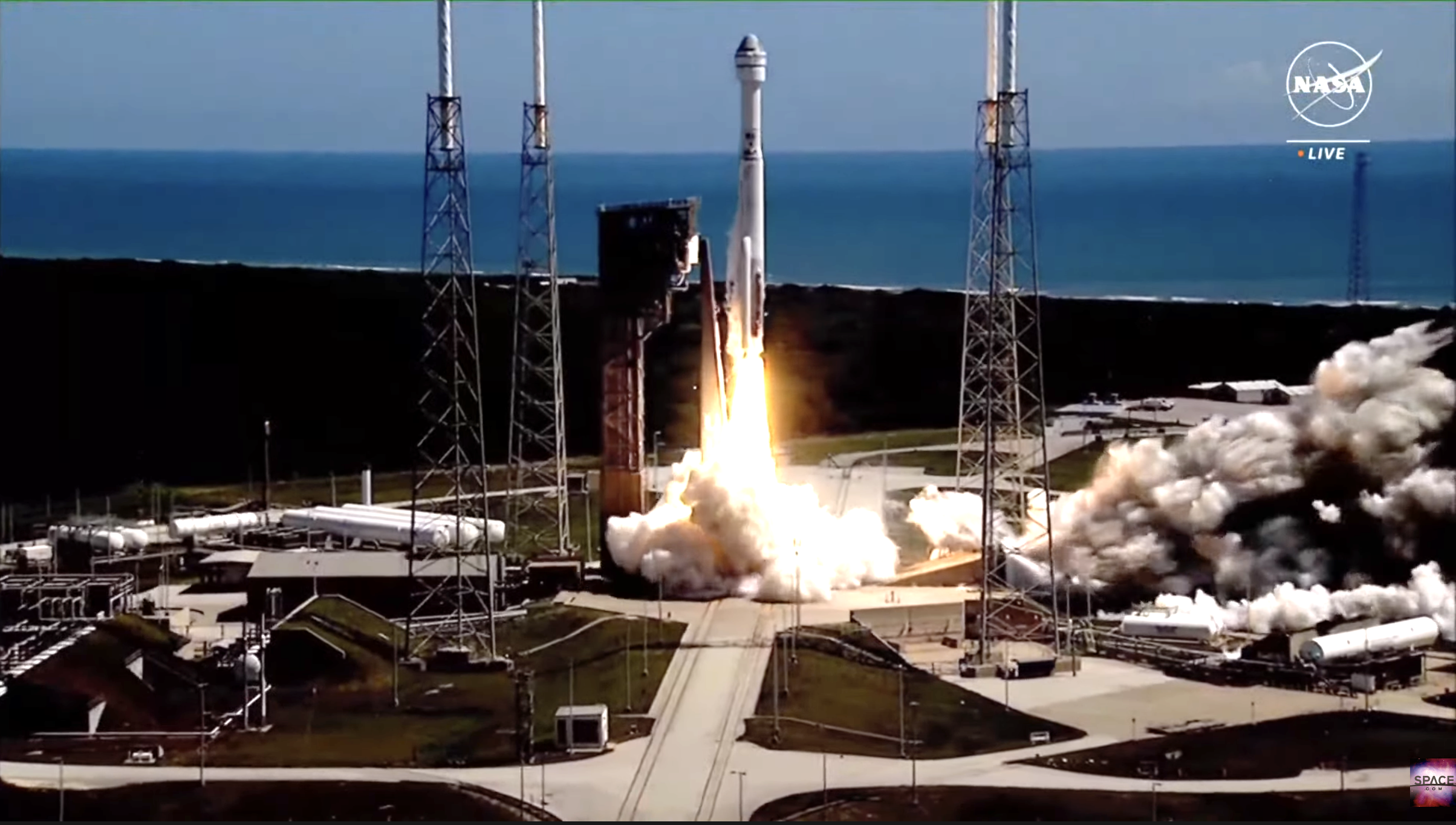

After years of delays and multiple recent setbacks, Boeing’s Starliner launched from Cape Canaveral, Florida aboard a United Launch Alliance (ULA) Atlas V rocket on June 5 at 10:52AM EST. After over a day’s travel time, the spacecraft docked and delivered two astronauts to the International Space Station at 1:34PM on Thursday. The launch makes Boeing the second private contractor (after SpaceX) to transport humans for NASA, but the company’s achievement is shadowed by ongoing airline manufacturing scandals. Multiple technical issues also developed during Starliner’s voyage to the ISS, including two additional helium valve leaks. Five of its 28 reaction-control thrusters malfunctioned during Starliner’s first docking attempt, prompting a delay while mission team worked to eventually bring four of them back online.
At roughly 16.5-feet-tall and 15-feet-wide while attached to its rear service module, Starliner can accommodate as many as seven astronauts. For future NASA transport missions, however, Boeing generally expects four-member crews alongside payloads for each of Starliner’s 10 planned missions. Today’s launch included NASA astronauts, Butch Wilmore and Suni Williams. In a statement provided after takeoff, NASA Administrator Bill Nelson said Starliner “marks a new chapter of American exploration.”
[Related: NASA and Boeing’s Starliner delays expose the challenges of space travel.]
June 5’s launch arrived after a decade of mounting development issues. NASA announced its first Commercial Crew Program contracts to Boeing and SpaceX for the development of new spacecraft in 2014. But despite receiving barely half of Boeing’s $5.2 billion contract, SpaceX managed to launch the first-ever private transport of NASA astronauts in 2020. Boeing, meanwhile, wouldn’t complete an uncrewed test flight until 2022.

Starliner’s ultimate fate was uncertain in summer 2023, when experts estimated the beleaguered project to have already cost Boeing $1.5 billion. In recent months, the company also drew public criticism and regulatory scrutiny after alleged engineering and safety issues led to high-profile emergencies aboard multiple Boeing 737 Max airplanes. Mission control delayed the spacecraft’s launch multiple times already over the four weeks. On May 6, engineers discovered a malfunctioning valve in the Atlas V’s Centaur upper stage that required replacement, while a small helium leak in one of Starlink’s service module reaction-control thrusters was later detected on May 17. Mission control ultimately determined the gas leak did not pose a threat to the launch and moved the launch date to June 1. With less than 4-minutes to liftoff on Saturday, however, Starliner’s launch was yet again scrubbed after engineers detected a computer issue within the ground launch sequence equipment.
Despite these issues, Boeing’s Starliner now appears back on track for commercial space ventures. During its trip to the ISS, astronauts Butch Wilmore and Suni Williams will test the vehicle’s life-support and navigation systems, evaluate seats, and assess the system designed to move cargo into the space station. Starliner’s astronauts will now spend roughly 10 days at the ISS before departing back for Earth. Instead of a water landing, however, the spacecraft is designed to deploy parachutes and airbags for a soft touchdown at a land location in the southwest US.
Its next launch is tentatively scheduled for sometime early next year, and will include double the astronaut crew along with additional research equipment and mission supplies.
“Design and development has constant ups and downs, but the overall slope is always up,” Boeing commercial crew program manager Mark Nappi told reporters during Starliner’s very first pre-launch news conference last month.
UPDATE 05/06/2024 1:48PM: This article has been updated to include Starliner’s successful dock with the ISS.